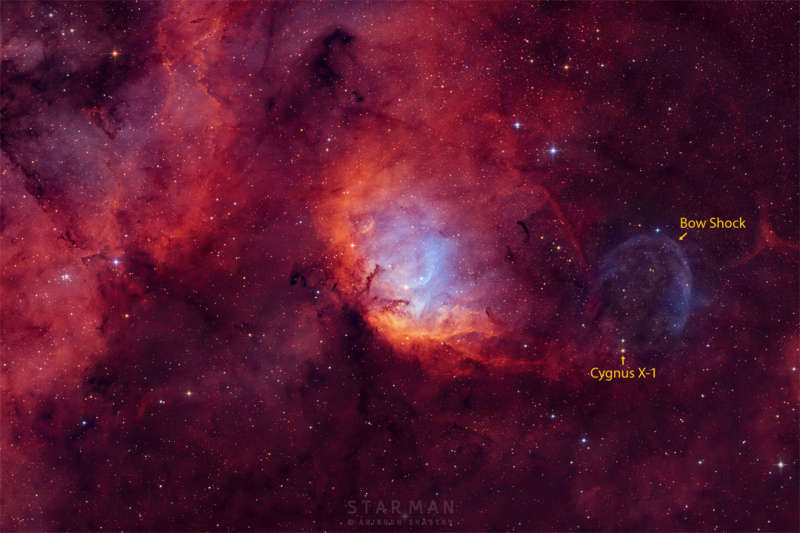Credit & Copyright: Anirudh Shastry
Explanation:
When can you see a black hole, a tulip, and a swan all at once?
At night -- if the timing is right,
and if your telescope is pointed in the
right direction.
The complex and beautiful
Tulip Nebula blossoms about 8,000
light-years away toward the
constellation of Cygnus the Swan.
Ultraviolet radiation from young energetic stars
at the edge of the Cygnus
OB3 association, including
O star HDE 227018,
ionizes the atoms and powers the emission from the Tulip Nebula.
Stewart Sharpless cataloged this nearly 70 light-years
across reddish glowing cloud of interstellar gas and dust in
1959, as
Sh2-101.
Also in the
featured field of view is the black hole
Cygnus X-1,
which to be a
microquasar because it
is one of strongest
X-ray
sources in planet Earth's sky.
Blasted by powerful jets from a
lurking
black hole,
its fainter bluish curved
shock front
is only faintly visible beyond
the cosmic Tulip's petals, near the right side of the frame.
Back to School?
Learn Science with NASA
1999 2000 2001 2002 2003 2004 2005 2006 2007 2008 2009 2010 2011 2012 2013 2014 2015 2016 2017 2018 2019 2020 2021 2022 2023 2024 2025 |
Yanvar' Fevral' Mart Aprel' Mai Iyun' Iyul' Avgust Sentyabr' Oktyabr' Noyabr' Dekabr' |
NASA Web Site Statements, Warnings, and Disclaimers
NASA Official: Jay Norris. Specific rights apply.
A service of: LHEA at NASA / GSFC
& Michigan Tech. U.
|
Publikacii s klyuchevymi slovami:
emissionnaya tumannost' - emission nebula - Lebed' X-1 - chernye dyry
Publikacii so slovami: emissionnaya tumannost' - emission nebula - Lebed' X-1 - chernye dyry | |
Sm. takzhe:
Vse publikacii na tu zhe temu >> | |
